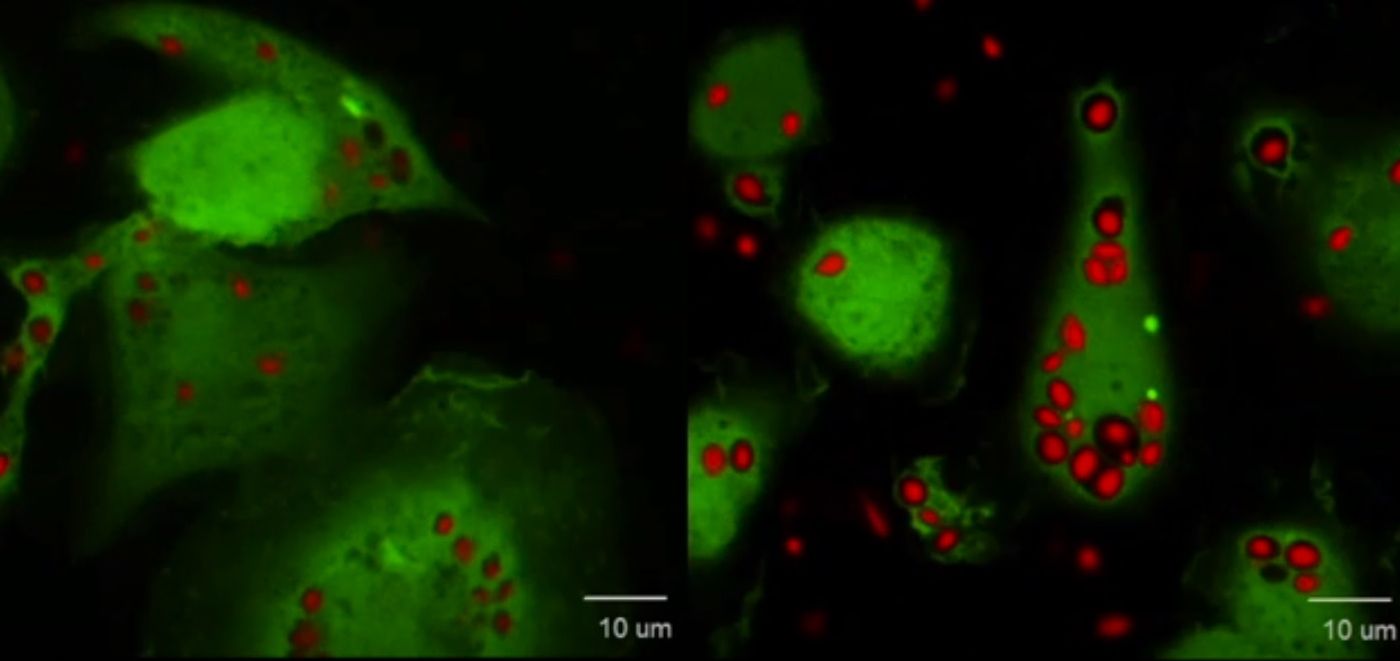Scientists Finally Figure Out How Immune Cells Release IL-1
A signaling molecule called IL-1 was identified for the first time in 1984, and only now are scientists fully understanding how cells release it. From Boston Children’s Hospital, researchers describe the protein responsible for releasing IL-1 from immune cells.
Until now, scientists theorized that perhaps IL-1 wasn’t actively released by cells at all, that instead it was just “passively released from dead cells.” But IL-1 is indeed actively released by cells, thanks to a protein called gasdermin D. Why did it take so long to learn this about IL-1? "Most proteins have a secretion signal that causes them to leave the cell," explained senior author Jonathan Kagan, PhD. "IL-1 doesn't have that signal.”
Gasdermin D facilitates the release of IL-1 by poking holes in the cell membrane during an infection. Past studies showed gasdermin D triggering the release of other cytokines through a similar process called pyroptosis where the cell dies during the cytokine’s release. But sometimes, in the case of IL-1 release, the cell doesn’t have to die.
In 2016, some of the present study’s authors found that when dendritic cells release IL-1, they shift into a hyperactivated state, and their ability to recruit memory T cells enhances. Dendritic cells are antigen-presenting cells, which means they take pieces of foreign particles, potentially pathogens, and present them to T cells, which decide whether or not to launch an attack. In the new study, researchers experimented with hyperactivated macrophages, phagocytic cells that engulf and digest pathogens.
The new experiments showed that macrophages could also release IL-1 without dying. “Gasdermin forms enough pores to let IL-1 pass through, but not enough to kill the cell," Kagan explained.
In light of the results connecting immune cells, gastrodermin D, and the release of IL-1, boosting IL-1 release from live immune cells could be a new approach to increasing memory T cell levels. These are cells that “remember” past pathogens and are at the ready to target them again should the pathogen return.
This approach wouldn’t come without its risks, though. Researchers would have to be careful because too many inflammatory cells, a result of higher IL-1 release, can lead to autoimmune diseases; IL-1 is often a drug target for Alzheimer’s disease and inflammatory disorders.
The present study was published in the journal Immunity.
Sources: Immunology and Cell Biology, Boston Children’s Hospital









